Comic book writer and editor Dennis O’Neil memorably compared Gotham City to “Manhattan below 14th Street at eleven minutes past midnight on the coldest night in November,” which has made it a favorite inspiration for dieselpunk creators. Gotham’s influence can be seen in everything from the Aurora Noir of Tim Razumovsky to the world of Metropius to the art of Benjamin Carre and Thomas Pringle.
Batman’s home city was named after a nickname for New York. It is typically situated in the southern tip of New Jersey, across the Delaware Bay from Superman’s Metropolis.
In the movies
To bring Gotham to the silver screen for Tim Burton’s Batman (1989), Production Designer Anton Furst created what he described as “a city run by crime, with a riot of architectural styles.”
An essay in ugliness. As if hell erupted through the pavement and kept on going.
Furst filled Gotham with oversized Gothic cathedrals and gargantuan Art Deco and Art Nouveau statuary. Among his inspirations were the architectural drawings of Hugh Ferriss and Fritz Lang’s Metropolis (1927). In the opening shots of the movie, the frame is smothered in smog and steam, enhancing the German Expressionism and noirish qualities of a city enveloped by night. Batman Returns (1992) continued that theme.
Joel Schumacher, who took over from Burton in Batman Forever (1995), incorporated elements of cyberpunk. Partly because the studio worried Burton’s neo-noir take on the world of Batman might scare away younger viewers.
Schumacher’s production designer, Barbara Ling, drew inspiration from 1930s Manhattan and the Neo-Tokyo of the 1988 anime Akira. She kept what she called the larger-than-life “World’s Fair proportions” so as to “not lose Gotham’s sensibility of overbearingness burdened by crooks.”

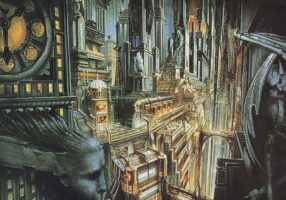
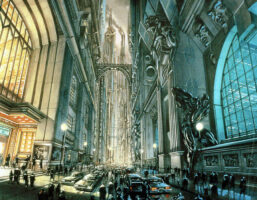
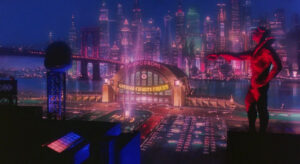
Christopher Nolan filmed Batman Begins (2005) and The Dark Knight (2008) in Chicago before moving to Pittsburgh and New York for The Dark Knight Rises (2012). In The Art and Making of The Dark Knight Trilogy (2012), Nolan is quoted as saying he wanted to show Gotham “as one of the great cities in the world, like London or Los Angeles or Paris.”
“Our core concept was, ‘What if Batman were real?'” Production Designer Nathan Crowley told Chicago Magazine. “That alone set it apart.”
The previous two films were very fantastical, very comic book-like. We really wanted to push the realism and the belief that this could really happen.

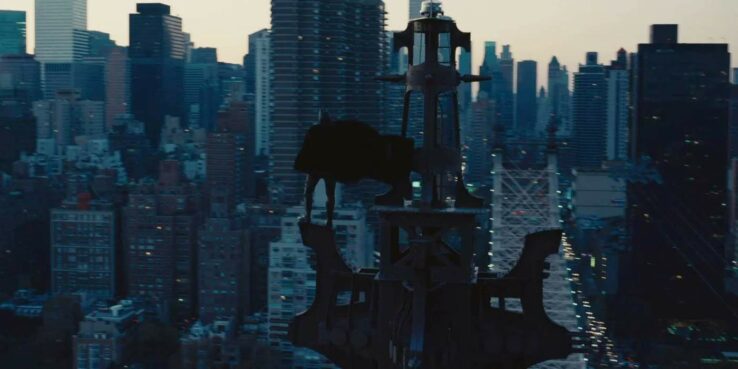
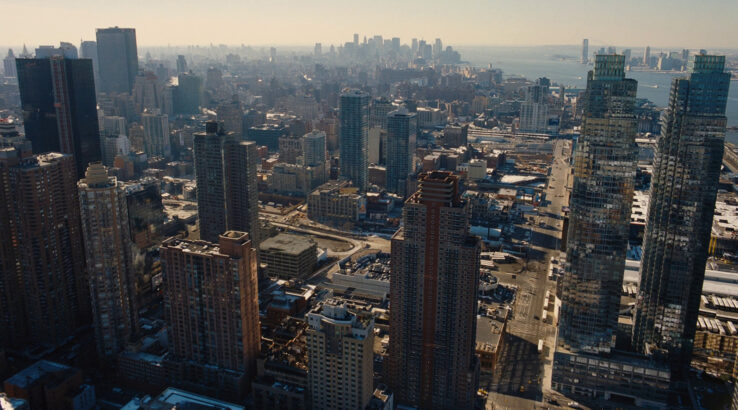
For its brief appearance in Batman v Superman: Dawn of Justice (2016), Zack Snyder turned to Detroit, finding its dreary housing complexes, dark high-rises and industrial landscapes a proper fit for the city of crime. “It has some ruins, it’s a nitty-gritty city,” Art Director Troy Sizemore recalled.
Matt Reeves filmed The Batman (2022) in Glasgow, Liverpool and London, although plate shots of Chicago and New York were also used. “I wanted it to feel like an American city you’d never been to,” the director told CBR.
Production Designer James Chinlund added:
We were playing with Gotham as having this prewar boom time, looking at a lot of architecture from movie palaces where we could play with ornaments and shapes in different ways. It created this idea that the city has fallen on hard times and had various booms and busts along the way, with a lot of unfinished skyscrapers and partially complete construction projects.
Jaime Jones, who previously worked on Batman v Superman: Dawn of Justice as well as Star Wars: Episode VIII — The Last Jedi (2017), did the concept art of Gotham for Reeves’ movie.
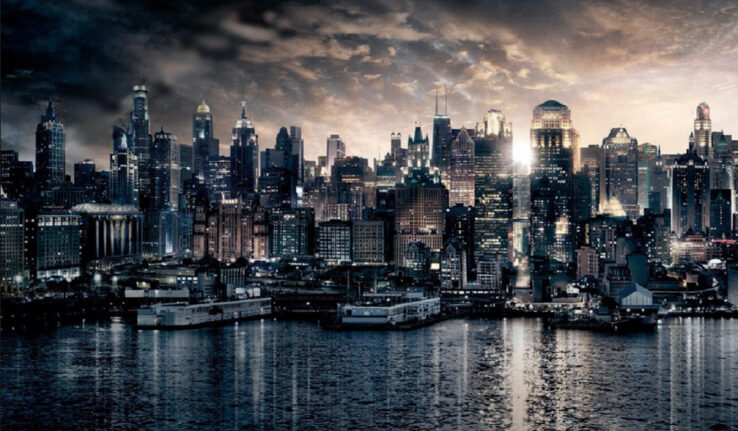
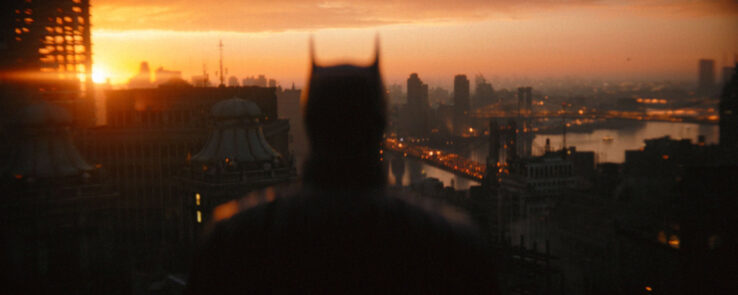


In the series
The Warner Bros. series Gotham, broadcast on Fox from 2014 to 2019, went so far as to block out the sun in postproduction if they couldn’t avoid shooting scenes on sunny days. It takes places in the Gotham of Bruce Wayne’s childhood. Production Designer Doug Kraner drew inspiration from the New York of the late 1970s and early 80s, “when the city was really at its roughest in recent history: before the subways were cleaned up, when crime was high, when the city just felt pretty brutal.”
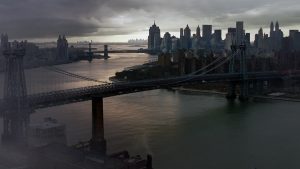


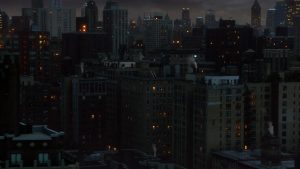
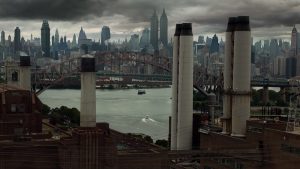
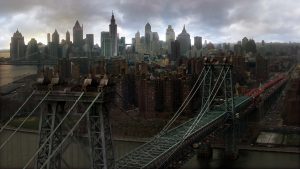
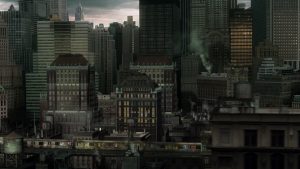
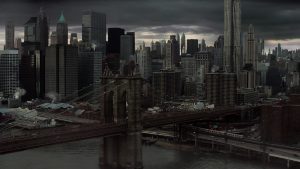
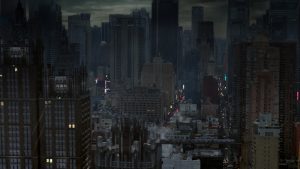
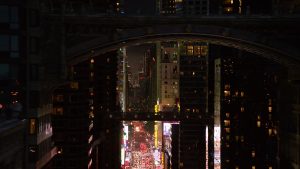
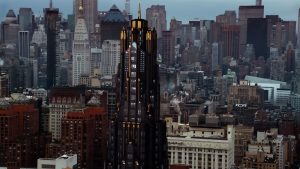
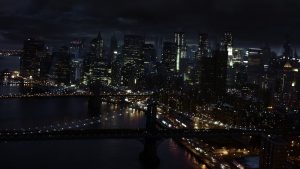
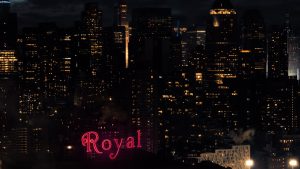
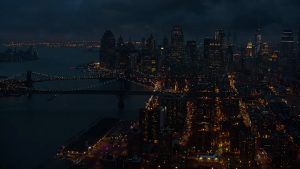
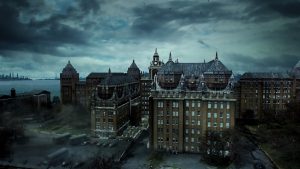
In video games
Players can explore Gotham in the 2015 video game Batman: Arkham Knight, in which Scarecrow and a mysterious Arkham Knight plot to unite all of Gotham’s criminals in a battle against Batman. The game features several neighborhoods spread over three islands, including a modern office district, Chinatown and a run-down harbor.

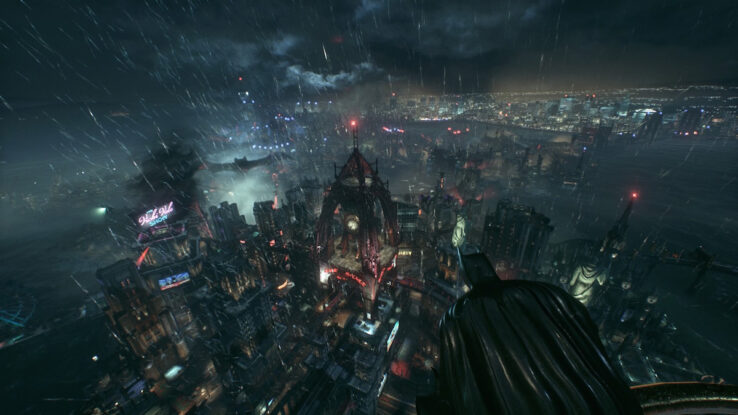
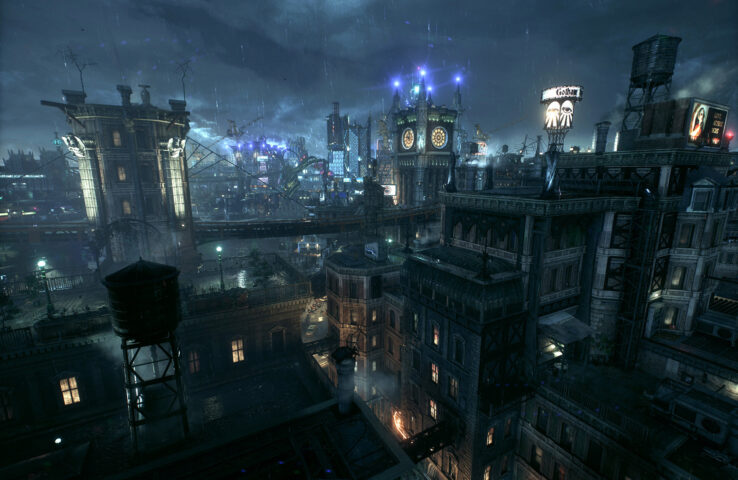
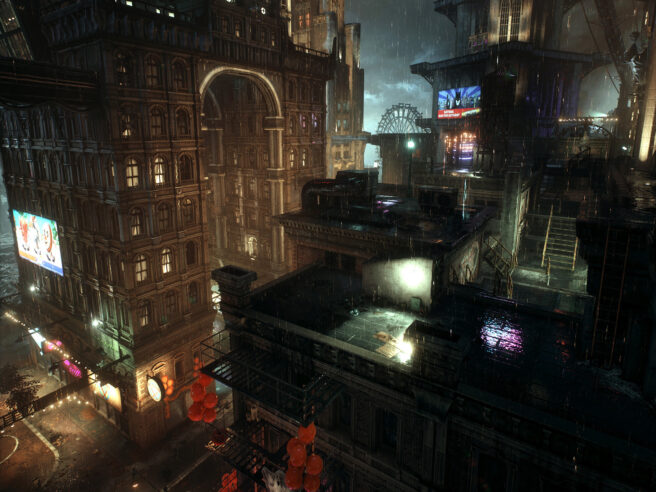
The game’s concept art reveals more Gothic looks and — zeppelins! (They made it into the game.)
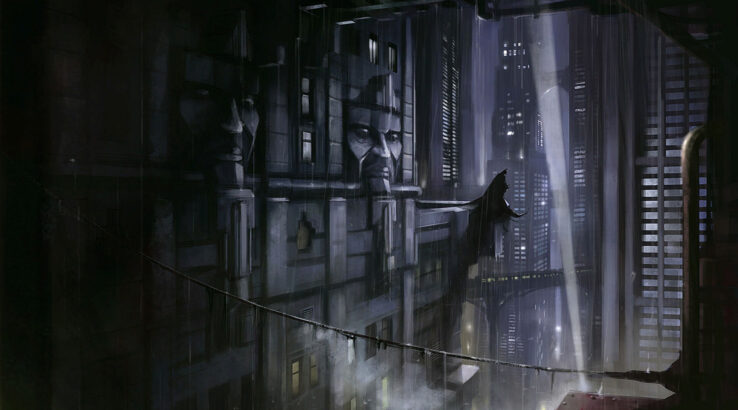


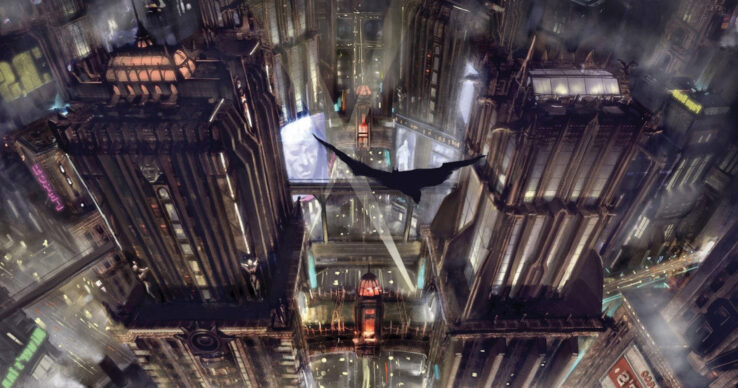
Eric Gagnon did the concept art for the previous game in the series, Batman: Arkham Origins (2013).
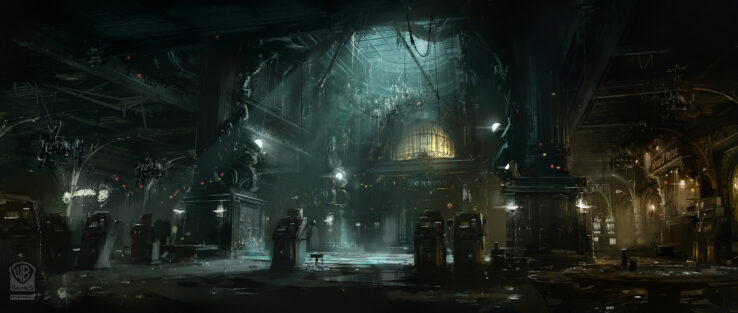
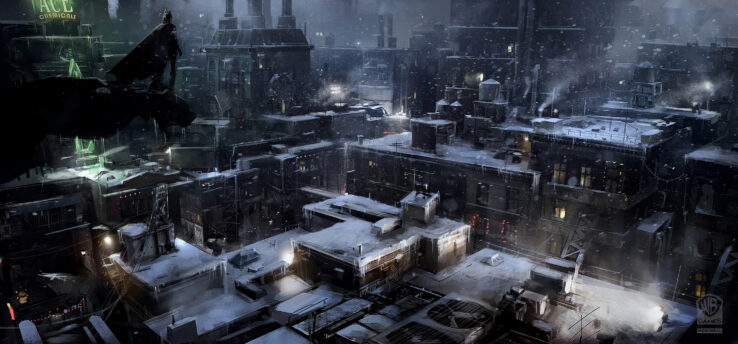
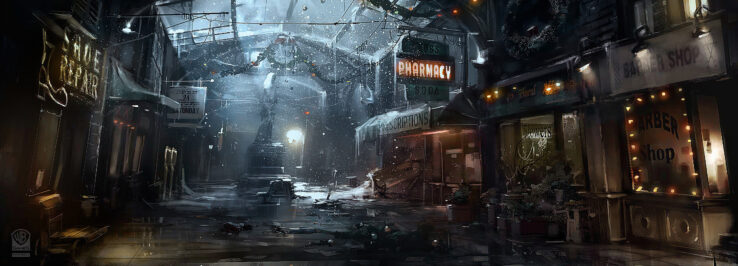
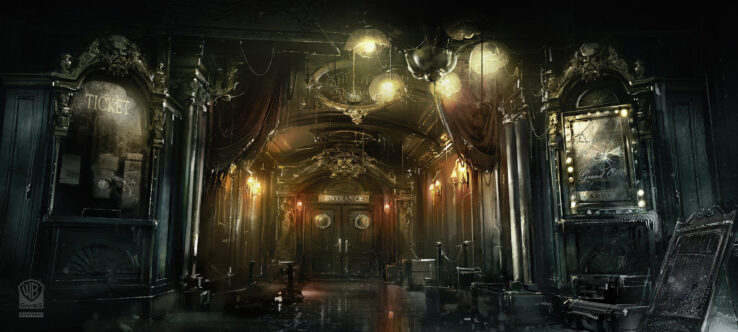
Map
Gotham was first mapped by illustrator Eliot R. Brown for the late-1990s “No Man’s Land” story arc, in which the city is cut off from the rest of the United States. Brown told Smithsonian Magazine:
Like most comic book constructs, it had to do a lot of things. It needed sophistication and a seamy side. A business district and fine residences. Entertainment, meat packing, garment district, docks and their dockside business. In short all of Manhattan and Brooklyn stuffed into a … well, a nice page layout
Brown’s sketches shown an evolution from a stylized version of Manhattan into three closely-knit main islands with several smaller ones surrounding it. His design debuted in the 1999 story “Claim Jumping” and has been respected by subsequent stories and films. The only change Christopher Nolan’s made was adding The Narrows between Midtown and Downtown islands.
Gotham Archives has more.
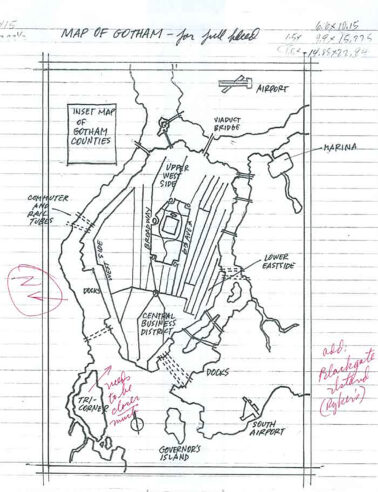
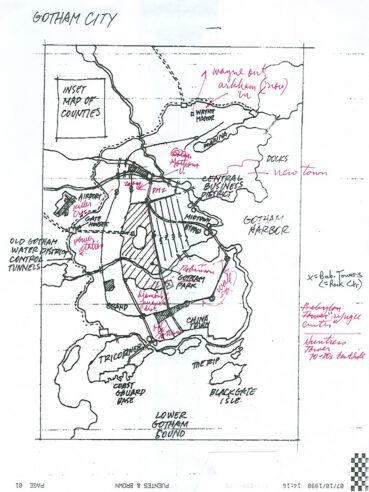
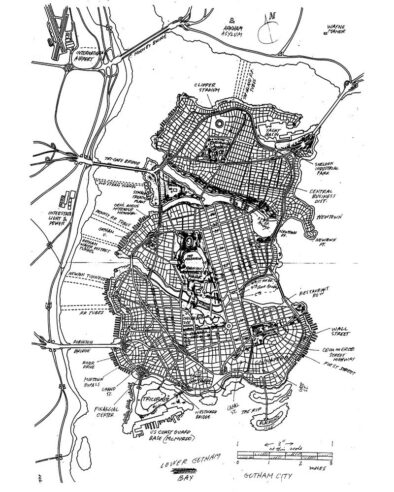
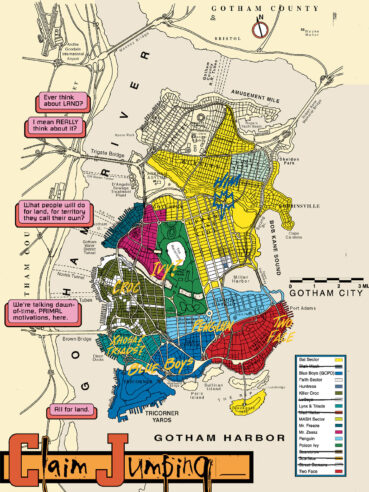

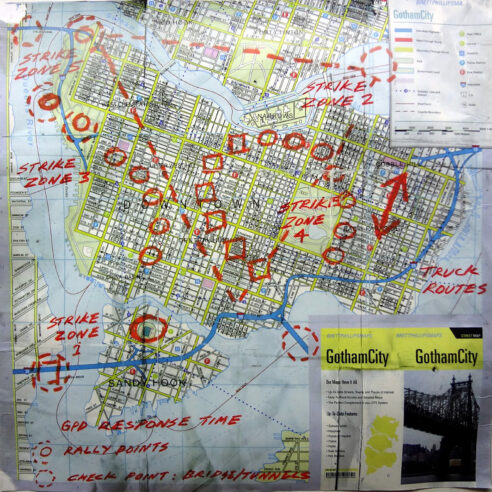
Artists
Artists Guillaume Berthoumieu, David Bocquillon Carrasco, Thomas Dubois, Nicholas Maxson-Francombe and Leif Heanzo have created their own versions of Gotham.
Also shown here is a conceptual artwork for the mobile game DC Unchained (2018) by Dwongwoo Kim.


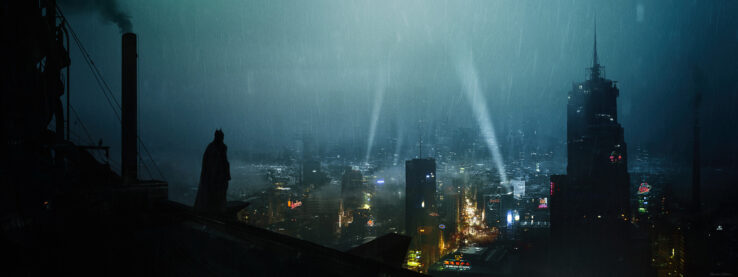
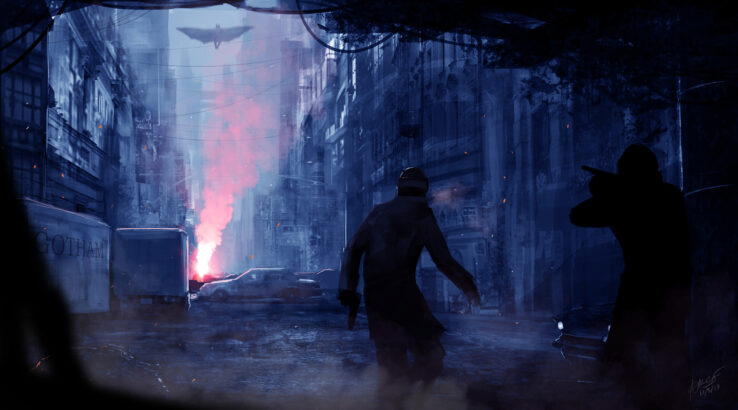
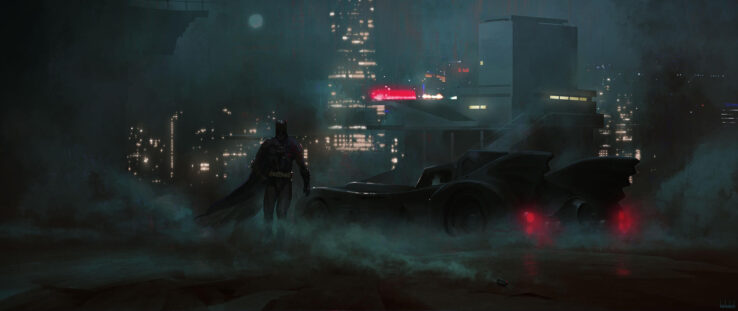
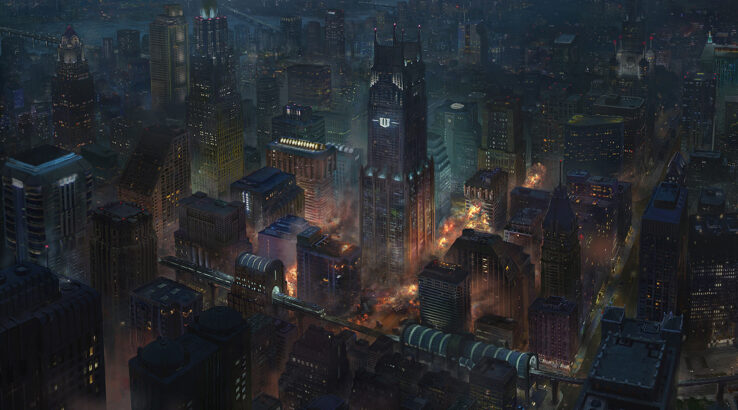

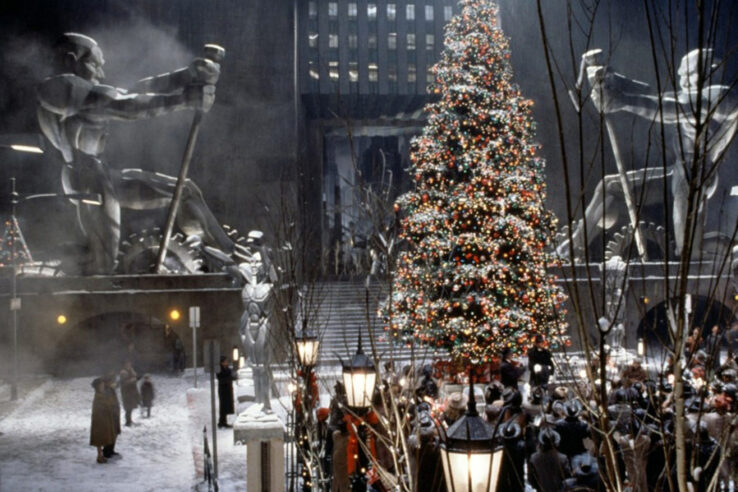
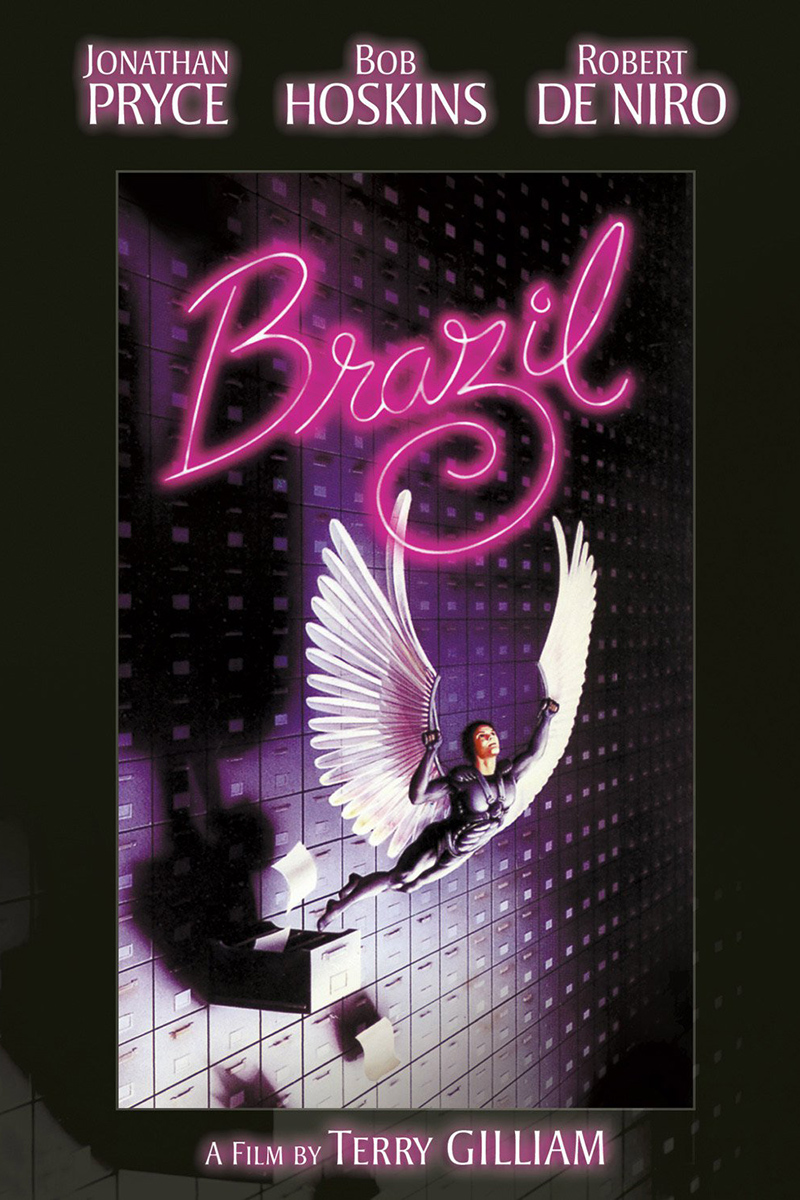
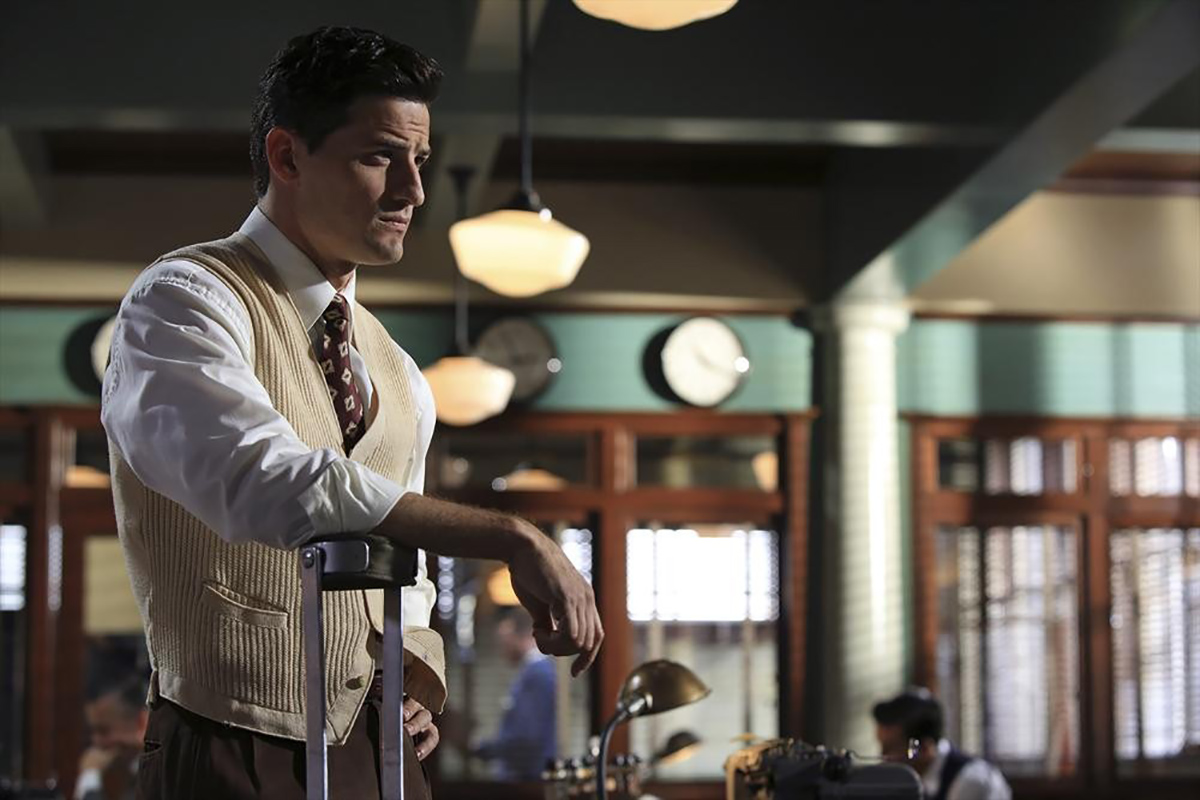

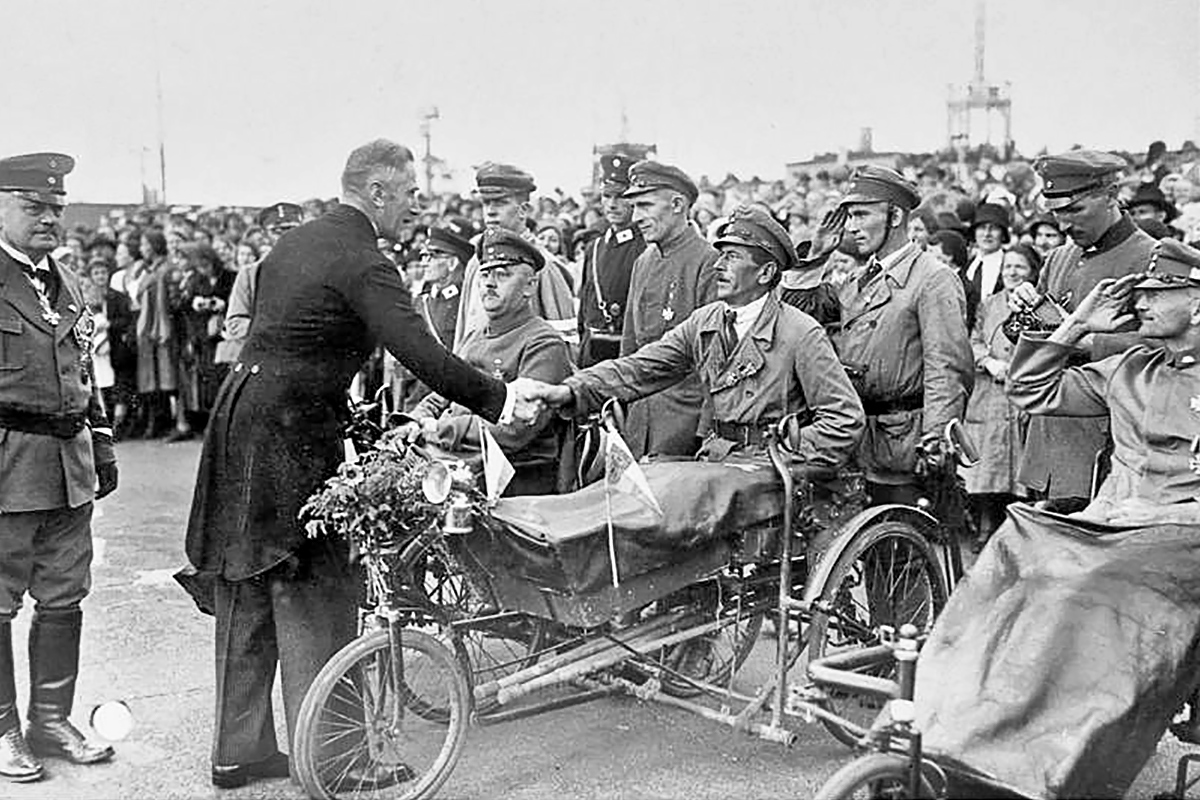
1 Comment
Add YoursDon’t think anything has captured the gothic-fantasy-real balance better than Burton in Batman 1989. The Burton sequels went too far with the over-the-top Deco city designs Batman Begins’ Gotham was decent and had a couple good shots (from the plane and the monorail), but its two sequels were terrible: boring, mundane shots of Chicago.
The Batman was a big improvement from the Nolan sequels in terms of the city’s look, but the excellent artbook, which I bought, had me expecting more than the actual, overly-dark film delivered. It had one aerial shot that was simply Manhattan with minor changes that really disappointed me.
I think I’d like to see a Batman live action movie set in the 1930s, because when modernism and glass block towers enters the Gotham design, it cancels out the historic drama/romance/beauty of the pre-war cityscape – in both Batman and real life.